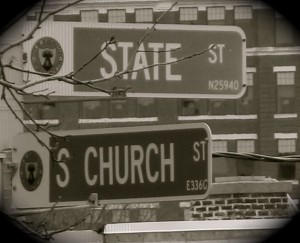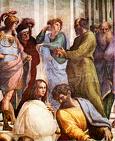Early in the pages of Scripture God decreed that It is not good for the man to be alone. I will make a suitable helpmate for him (Gen 2:18). And God made woman. Now the fact is that a woman is VERY different from a man. The physical differences are obvious but these physical differences arise from important differences in the soul. It is the soul that is the form of the body and the qualities of the male and female soul give rise to physical differences. I know that this is politically incorrect today, but it is true. It is a common modern error to be dismissive of the profound differences between the sexes. No one can deny the physical differences but they are dismissed as surface only, of no real significance. But the truth is that our bodies are expressions of the faculties of our soul and male and female differences are far more than skin deep.
It remains true that these differences often give rise to tensions in the marriage and the overall relationships between men and women. That men and women perceive differently, think differently, and have different emotional experiences is just a fact and it is always healthy to recognize and accept reality. Too often in the modern age there has been a tendency to dismiss these deep differences as just archetypes of bygone “sexist” era. But what ends up happening is that an expectation is created that these differences will just go away when we decide to ignore them or pretend they don’t exist. But guess what , they don’t. And thus resentments and anger follow. Too many marriages end in power struggles because neither spouse can accept that it was not good for them to be alone and that God gave them a spouse who, by design, is very different so that they could be challenged and completed.
It is true, Original sin has intensified our pain at the experience of these given differences. The Catechism links the tension surrounding these difference to the Fall of Adam and Eve:
[The] union [of husband and wife] has always been threatened by discord, a spirit of domination, infidelity, jealousy, and conflicts that can escalate into hatred and separation. This disorder can manifest itself more or less acutely, and can be more or less overcome according to the circumstances of cultures, eras, and individuals, but it does seem to have a universal character. According to faith the disorder we notice so painfully does not stem from the nature of man and woman, nor from the nature of their relations, but from sin. As a break with God, the first sin had for its first consequence the rupture of the original communion between man and woman. Their relations were distorted by mutual recriminations;their mutual attraction, the Creator’s own gift, changed into a relationship of domination and lust; and the beautiful vocation of man and woman to be fruitful, multiply, and subdue the earth was burdened by the pain of childbirth and the toil of work. Nevertheless, the order of creation persists, though seriously disturbed. To heal the wounds of sin, man and woman need the help of the grace that God in his infinite mercy never refuses them. Without his help man and woman cannot achieve the union of their lives for which God created them “in the beginning.” (CCC #s 1606-1608)
In the end, it seems clear that we need to return to an appreciation of the necessity of our differences. Though our differences can be be intensified by sin, it is a fact that God made us different for a reason. These differences help spouses to complete each other. A husband should say, “My wife has some things important to teach me. I am incomplete without her.” Likewise the wife should be able to say that her husband has important things to teach her and that he somehow completes her. In this way we move beyond power struggles and what is right and wrong in every case and learn to experience that some tension is good. No tension, no change. God intends many of these differences to change and complete spouses. God calls the very difference humans he has made “suitable” partners.
And humor never hurts. Here is a wonderful and funny comedy routine about the differences between a man’s brain and a woman’s brain. Humor is often the best of medicines to defuse some of the tensions that arise from our differences. Vive la difference!
(By the way, as with any humor, stereotypes are used a bit here. But things are usually funny because they ring true. It is also a fact that not every individual man or woman has every trait described here (for example, I don’t have a very big “nothing box”) but enjoy this video for the humorous descriptions of the general situation).




